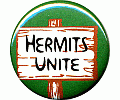Beyond safeguarding personal privacy is the larger social context in which we pursue the project of solitude. It is not simply the notion of not wasting time and energy on those who cannot appreciate the project or who will resent and begrudge it. Rather, it is the very fabric of human nature, of which the gospel speaks through the words of Jesus in answer to the question of why he spoke in parables:
To one who has shall be given, and shall have abundance; but from one who does not have even that which he has shall be taken away. … Seeing they do not see, and hearing they do not hear, neither do they understand.
The premise of safeguarding the insights of solitude rather than broadcasting them to others is, therefore, based on an intuitive realization made explicit in the above passage. Those whom Abba Moses considered unworthy and begrudgers neither see, nor hear, nor understand. They will not appreciate or take to heart this path.
Do they have potential? Here is the rub. They must seek it first, sincerely and passionately, as did John Cassian, before they can be instructed in it. Not merely seek it, either, but change their lives radically in order to be a worthy receptacle. It is the paradox observed in Zen practice that one should meditate first and then insight will come, rather than waiting for insight and meanwhile refusing to practice.
Elsewhere in the same gospel, another analogy is made citing pearls. The “pearl of great price” is worth the farmer buying it with all his savings in order to have it. The peasant listeners of Jesus’ parable would have realized that a farmer’s wealth is meager, and that to make this decision to spend it all is momentous, not the equivalent of the mere financial speculations of the wealthy merchant. The pearl is nothing less than the kingdom of heaven — it may be called whatever one’s tradition prefers.
Furthermore, it is a single pearl. How can it be chopped up among many? It is the self, the very self, the core of our being. How absurd to think that one could or should “resell” it for something else? Others may use the farmer’s “map” to the field in which he found the pearl, but they will not find it, for the pearl has to be discovered within. It is the very quest for wisdom, the map beyond the “gates of perfection,” as John Cassian puts it.

